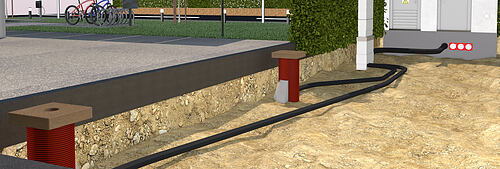Radiation Protection Act – what now?
The new Radiation Protection Act came into force at the end of 2018, establishing the statutory framework for radon – including the relevant reference levels. What can construction companies, architects and private building developers expect to happen now? Read the last section of our radon series to find out more.
Statutory requirements relating to the radioactive noble gas will be more rigorous this year. Since radon – like smoking – is a lung cancer risk factor, the legislation is designed as a health protection measure. The reference level for radon in interiors has been set at 300 Becquerel per cubic metre. If this level is exceeded, reduction measures will have to be taken. In the case of existing buildings, this can happen on a voluntary basis as far as private individuals are concerned. But with new buildings, the developer is responsible for ensuring protection from radon. So it makes sense for house builders to be familiar with the issue and find out more about radon.
The new Radiation Protection Act also affects employers and employees. We normally spend most of our time at our place of work. In future, workplaces in basements and on ground floors in particular are to be inspected for radon exposure. This concerns all workplaces in basements and on ground floors that are located in so-called radon precaution areas.
The onus is on the employer to initiate the relevant measures where reference levels are exceeded. Radon precaution areas will be designated by the regional authorities responsible by the end of 2020.
Due to the staffing required, the authorities will probably not be able to check whether or not Radiation Protection Act provisions are actually being observed in each individual case. Nonetheless, radon expert Karin Leicht does expect ongoing checks to be carried out, especially at workplaces.
Ronnie’s radon tips:
- The most important thing is: keep calm
- Check on the radon map for Germany whether your area might be at risk
- Ensure regular ventilation
- Don’t economise on your floor slab sealing
- Opt for radon-proof building entries and wall entries
- Eliminate leaks
- It might also be possible to extract soil air that contains radon
- Avoid using basement rooms as regular living spaces
- If necessary, seal off living spaces from the basement
- Consult radon experts such as Ms. Leicht
(Sources: Interview with Ms. Karin Leicht on 04.12.2018 and website of the Federal Office for Radiation Protection)

















































